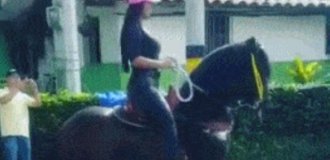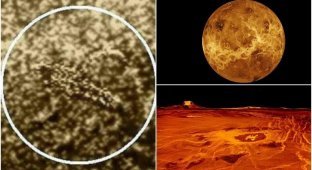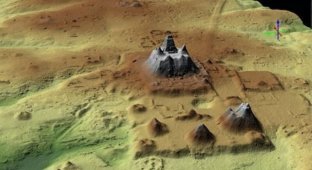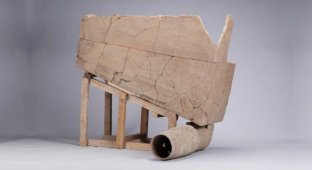Scientists have found traces of ancient Roman military camps in northern Arabia (7 photos)
Researchers of the project "Archaeology under threat disappearances in the Middle East and North Africa” (EAMENA) analyzed satellite imagery in southern Jordan and found traces of three ancient Roman camps. According to scientists, this indicates a possible undocumented military campaign by the Ancient Rome in present-day Saudi Arabia. 
Analysis of satellite images revealed a series of three Roman camps east of Bayir. At present, it is no longer possible accurately date these structures or associate them with any documented Roman military campaigns in the region. The researchers suggest that these camps may be related to annexation of the Nabataean kingdom, which began in 106 AD.
The EAMENA project systematically analyzes satellite open source images via platforms such as Google Earth to track and document the status of archaeological monuments. During a survey of the Jordanian border area and Saudi Arabia was found a small trace of a rectangular fence, demonstrating the classical form of a Roman fortress or camp in the form of playing card. 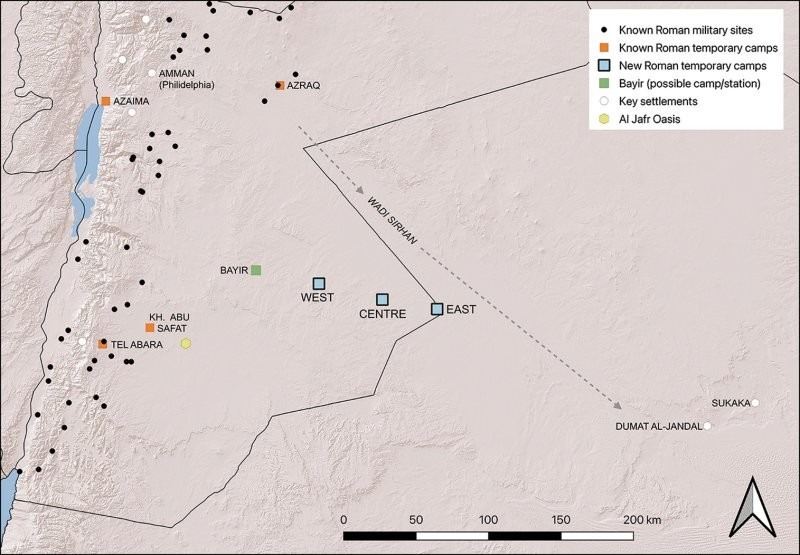
Fig.1. Map showing the location of the camps. Orange indicates previously known, blue indicates discovered with using satellite imagery analysis
Further research revealed two additional rectangle to the west (Fig. 1). These images clearly show shape, symmetrical entrances and external fortifications of the titulus in front of the entrances, which confirmed that these were temporary camps built by the Roman army. November 23, 2022 within the framework of the project "Aerial archeology in Jordan (AAJ) western and central camps were photographed. 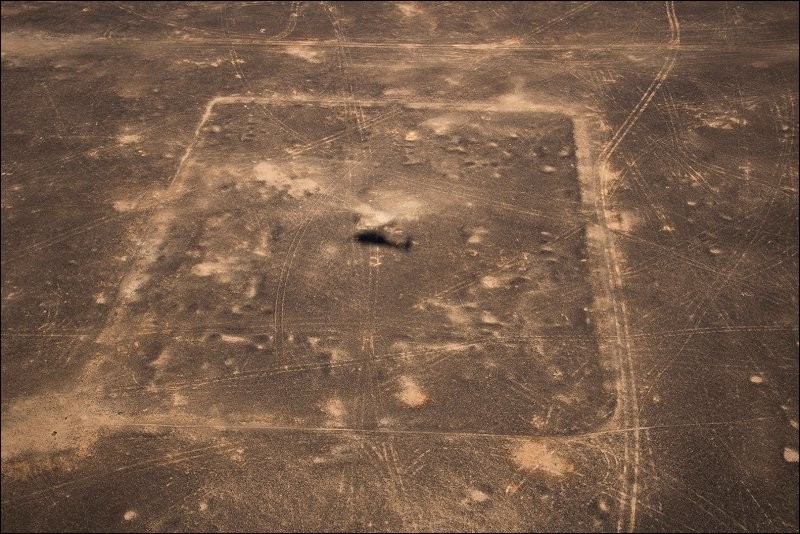
Rice. 2. View of the western camp from the southwest
West Camp is approximately 43.5 km from east-southeast of Bayir and measures approximately 125 × 105 m, and its internal area is about 1.291 hectares. 
Rice. 3. View of the western camp from the northeast
Central Camp is located approximately 44.2 km to east-southeast of the western camp and measures approximately 95 × 65 m, with a smaller internal area of about 0.691 hectares. 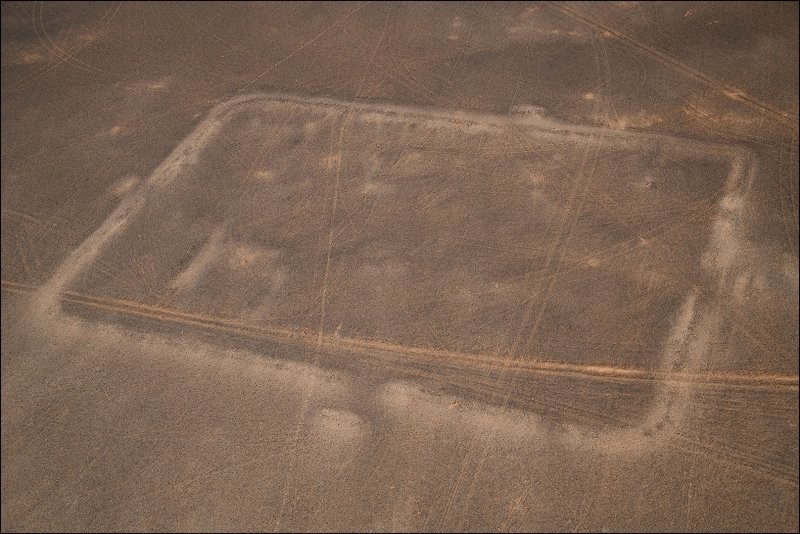
Rice. 4. View of the central camp from the east 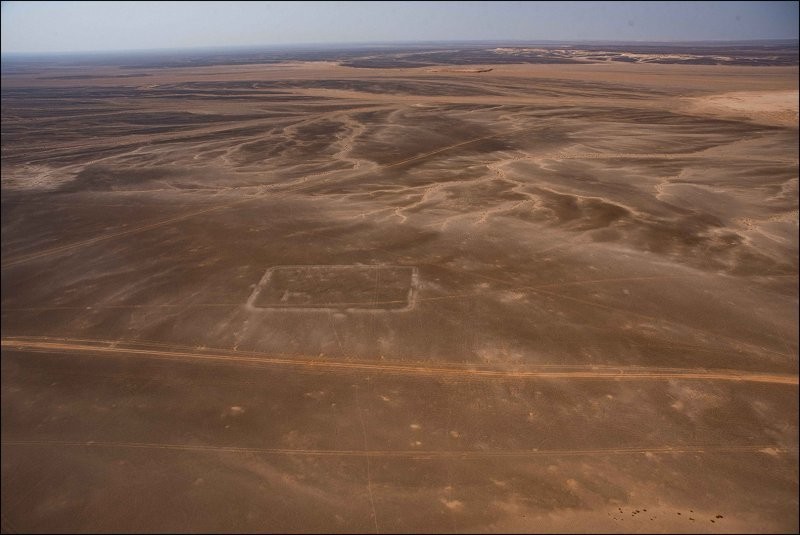
Rice. 5. View of the central camp from the east in the distance
East Camp is located approximately 37.7 km to east-southeast of the central camp and also measures approximately 95 × 65 m (Fig. 6).
The traces of these camps have not been documented anywhere. previously. They are located on barren limestone and chalk formations where no one has lived for thousands of years. 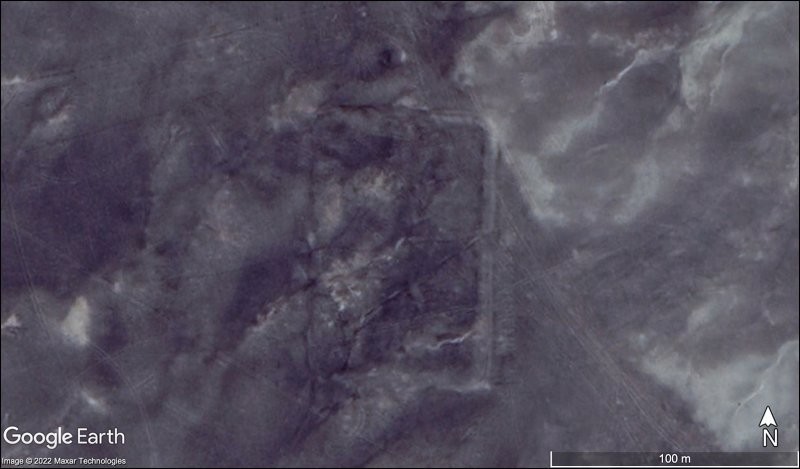
Rice. 6. Satellite image of the eastern camp, February 26, 2017 (Source: Google Earth; Maxar)
This line of camps indicates a Roman military expedition to northern Arabia. Most likely, it was a military campaign to Dumat al-Jandalu and Sakake in the Jawf region on the eastern edge of Nabataean kingdoms. Distance between camps over barren terrain, perhaps too large for infantry to cross in a day. According to scientists, the camps were intended for cavalry troops (or for movement on camels). The western camp could accommodate two cavalry cohorts, and the smaller ones in size, the central and eastern ones - one equestrian cohort.
Why did the size of the camp decrease, what happened to expedition? One possible scenario is that half troops was lost on the way to the central camp. But more likely the assumption that the forces were divided: part went forward, and part transported water for them from the wells in Bayir. There is also a third option: after leaving the western camp, the military detachment split up and moved to in different directions, some to the central camp, and some to direction, which has not yet been determined.
Military campaign of Marcus Aemilius Scaurus against the Nabataean kingdoms in 62 BC was centered on Petra, far to the west. Therefore, according to the researchers, the foundone camp soon all belong to a later period - the period of annexation Nabataean kingdom after 106 AD e.
Future field studies could potentially confirm some of these initial assumptions, consider scientists.
The results of the study were published in the journal Antiquity.

